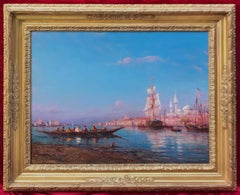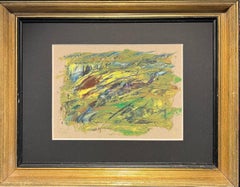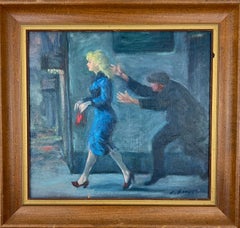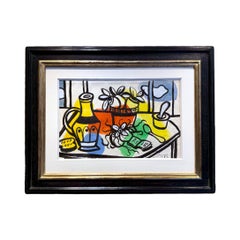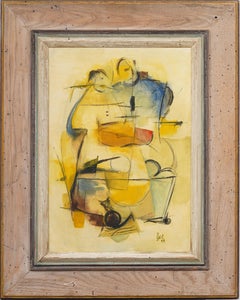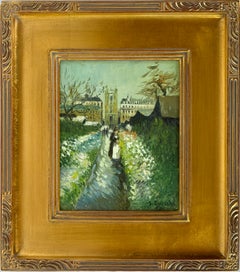1950s Paintings
Modern 1950s Paintings
Oil
Cubist 1950s Paintings
Canvas, Oil
Impressionist 1950s Paintings
Canvas, Oil, Illustration Board
Modern 1950s Paintings
Canvas, Oil
Expressionist 1950s Paintings
Oil, Board
1950s Paintings
Foil
Impressionist 1950s Paintings
Oil, Board
Abstract Geometric 1950s Paintings
Canvas, Oil
Impressionist 1950s Paintings
Oil
Modern 1950s Paintings
Oil, Panel
Post-Impressionist 1950s Paintings
Canvas, Oil
Modern 1950s Paintings
Oil, Board
Modern 1950s Paintings
Canvas, Oil
Abstract 1950s Paintings
Oil
American Realist 1950s Paintings
Linen, Oil, Board
American Modern 1950s Paintings
Paper, Watercolor
Modern 1950s Paintings
Canvas, Oil
Romantic 1950s Paintings
Canvas, Oil
Impressionist 1950s Paintings
Canvas, Oil
Post-Impressionist 1950s Paintings
Canvas, Oil
Academic 1950s Paintings
Gouache
Impressionist 1950s Paintings
Oil, Board
Modern 1950s Paintings
Canvas, Oil, Wood, Paint, Wood Panel
1950s Paintings
Oil
Modern 1950s Paintings
Oil, Board
American Modern 1950s Paintings
Masonite, Oil
Modern 1950s Paintings
Oil
Impressionist 1950s Paintings
Oil
Impressionist 1950s Paintings
Canvas, Oil
Modern 1950s Paintings
Canvas, Oil
1950s Paintings
Oil
Fauvist 1950s Paintings
Oil, Board
American Modern 1950s Paintings
Gouache
Impressionist 1950s Paintings
Board, Oil
American Impressionist 1950s Paintings
Oil Pastel
American Realist 1950s Paintings
Oil, Linen
Expressionist 1950s Paintings
Canvas, Oil
Modern 1950s Paintings
Oil, Board
Contemporary 1950s Paintings
Lithograph
Fauvist 1950s Paintings
Canvas, Oil
Post-Impressionist 1950s Paintings
Canvas, Oil
American Realist 1950s Paintings
Linen, Oil
Modern 1950s Paintings
Paper, Ink, Gouache
Post-Impressionist 1950s Paintings
Paper, Oil
Impressionist 1950s Paintings
Canvas, Oil
Impressionist 1950s Paintings
Canvas, Oil
Old Masters 1950s Paintings
Copper
Modern 1950s Paintings
Oil, Canvas
American Impressionist 1950s Paintings
Canvas, Oil
Impressionist 1950s Paintings
Canvas, Oil
Hudson River School 1950s Paintings
Oil, Linen, Stretcher Bars
Abstract Expressionist 1950s Paintings
Oil Pastel, Cardboard
Post-Impressionist 1950s Paintings
Canvas, Oil, Board
Impressionist 1950s Paintings
Oil, Canvas, Board
Modern 1950s Paintings
Canvas, Oil
Abstract 1950s Paintings
Canvas, Oil
Land 1950s Paintings
Canvas, Oil
Abstract Expressionist 1950s Paintings
Canvas, Oil
Abstract Expressionist 1950s Paintings
Masonite, Varnish, Magazine Paper
Modern 1950s Paintings
Oil, Board
Read More
See Kent Monkman’s Magical Realist Take on Frontier History
With a solo show at the Denver Art Museum and a commission from the Met, the Cree Canadian painter has become an international sensation.
Yale’s Trove of British Art Is Back on View in a Refreshed Louis Kahn Building
After a two-year closure, they Yale Center for British Art opens its doors again, with all sorts of changes to its building and programming.
At 89, Artist Lucio Pozzi Is Reaching New Career Heights
The Italian-American’s 2020 abstract painting “The Hoe” personifies his “art of not knowing.”
The 1stDibs Guide to Types of Abstract Art
Get to know the key movements and artists who have influenced visual culture for more than a century.
With a Show at MoMA, Marlon Mullen Paints Pictures That Are beyond Words
The nonspeaking California artist is having a moment, with vivacious paintings that play on art-magazine covers as well as more mysterious abstractions.
The Vibrant Beauty of Orphist Art Supersedes Its Perplexing Name
This kaleidoscopic early-modern art style has long deserved another look. Now, the Guggenheim museum is doing just that.
The 50 Most Expensive Paintings Ever Sold
Curious about the most expensive paintings in the world? Discover the stories behind these masterpieces as well as the staggering prices they fetched.
Ludwig Bemelmans Captures the Thrilling Sight of Coney Island at Night
The ‘Madeline’ creator and Carlyle Hotel legend was in a New York state of mind in the 1940s when he produced this exuberant and rare oil painting.
